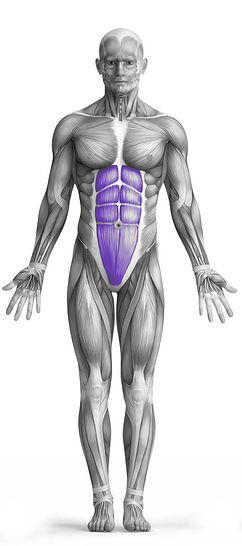Dumbbell Russian Twist 101 Video Tutorial
0

Exercise Synopsis
Target Muscle Group
Abs
Execution
Isolation
Force Type
Pull
Required Equipment
Dumbbell
Fitness Level
Intermediate
Variations
Alternatives
None
Timer
Hour
Minute
Second
Stopwatch
00:00:00:00
Overview
The Dumbbell Russian Twist is a dynamic core exercise targeting the abdominal muscles primarily, with secondary engagement of the obliques and triceps. This exercise involves sitting on the floor with knees bent, holding a dumbbell with both hands, and rotating the torso from side to side while maintaining a stable core and balanced posture. The twisting motion engages the entire core, particularly the oblique muscles, enhancing rotational strength and stability. With the added resistance of the dumbbell, it intensifies the workout, promoting muscle growth and definition in the abdominal region while also providing a challenge for the triceps.
How to Perform
Prepare for the Dumbbell Russian Twist by positioning yourself on a comfortable mat, lying on your back.
Bend your knees and lift them until your calves form a right angle with your thighs, maintaining a stable base.
Grasp a dumbbell with both hands, ensuring your palms are facing each other and pointing towards the ceiling, enhancing grip stability and engaging the triceps.
Initiate the exercise by lifting your shoulder blades off the mat, activating the core muscles, particularly the abdominal group.
Execute the twisting motion by rotating your torso, moving the dumbbell from one side of your body to the other, emphasizing the engagement of the oblique muscles.
Control the movement as you return the dumbbell to the starting position, maintaining stability and balance throughout the exercise.
Gradually lower your shoulder blades back down to the mat, controlling the descent to maximize muscle engagement and minimize strain on the lower back.
Repeat the entire sequence for the desired number of repetitions, focusing on proper form and controlled movements to effectively target the abdominal muscles while also engaging the secondary muscle groups of the obliques and triceps.
★ Bonus: For exercises that involve external weights (such as dumbbells, barbells, or machines), the One Rep Max (1RM) calculator can help you estimate your maximum lifting capacity. Use it to track your strength progress and adjust your training for optimal results.
Tips
Adjust the intensity of the exercise by increasing the elevation of your shoulder blades from the mat, thereby escalating the challenge level while effectively engaging the targeted muscle groups.
For individuals seeking a more advanced variation of the exercise, incorporate a dumbbell into the routine by gripping it firmly in both hands, providing added resistance to further enhance muscle activation and development.
How Not to Perform
Avoid overarching or rounding your back excessively during the Dumbbell Russian Twist to prevent strain on the lower back and ensure proper engagement of the abdominal muscles.
Refrain from using momentum to swing the dumbbell from side to side, as this diminishes the effectiveness of the exercise and increases the risk of injury. Instead, focus on controlled movements and deliberate twists of the torso to fully activate the targeted muscle groups.
Do not allow the dumbbell to travel too far away from your body during the twisting motion, as this may compromise stability and decrease muscle engagement. Keep the dumbbell close to your torso throughout the exercise to maximize the workload on the abs, obliques, and triceps.
Avoid holding your breath or breathing shallowly during the exercise, as this restricts oxygen flow and can lead to fatigue and decreased performance. Instead, remember to breathe deeply and rhythmically throughout each repetition to maintain energy levels and optimize muscle function.
Do not neglect proper posture and alignment throughout the exercise. Keep your chest lifted, shoulders relaxed, and core muscles engaged to support your spine and prevent slouching or hunching forward, which can increase the risk of injury and detract from the effectiveness of the exercise.
Avoid excessively fast or jerky movements, as these can compromise form and increase the likelihood of strain or injury. Focus on smooth and controlled motions, emphasizing the contraction of the abdominal and oblique muscles with each twist to maximize muscle recruitment and minimize wasted energy.
Do not rely solely on the arms to generate movement during the exercise. Instead, prioritize initiating the twist from the core muscles, allowing the arms to follow through naturally with the movement. This ensures that the abs and obliques are the primary drivers of the exercise, leading to more effective results and reduced strain on the arms and shoulders.
Variations
Variations of fitness exercises refer to different ways of performing a specific exercise or movement to target various muscle groups, intensities, or goals. These variations aim to challenge the body differently, prevent plateaus, and cater to individuals with varying fitness levels.
Alternatives
Alternative exercises in fitness refer to different movements or activities that target similar muscle groups or serve the same training purpose as the primary exercise. These alternative exercises can be used as substitutes when the original exercise is unavailable or challenging to perform due to various reasons such as equipment limitations, injuries, or personal preferences.








